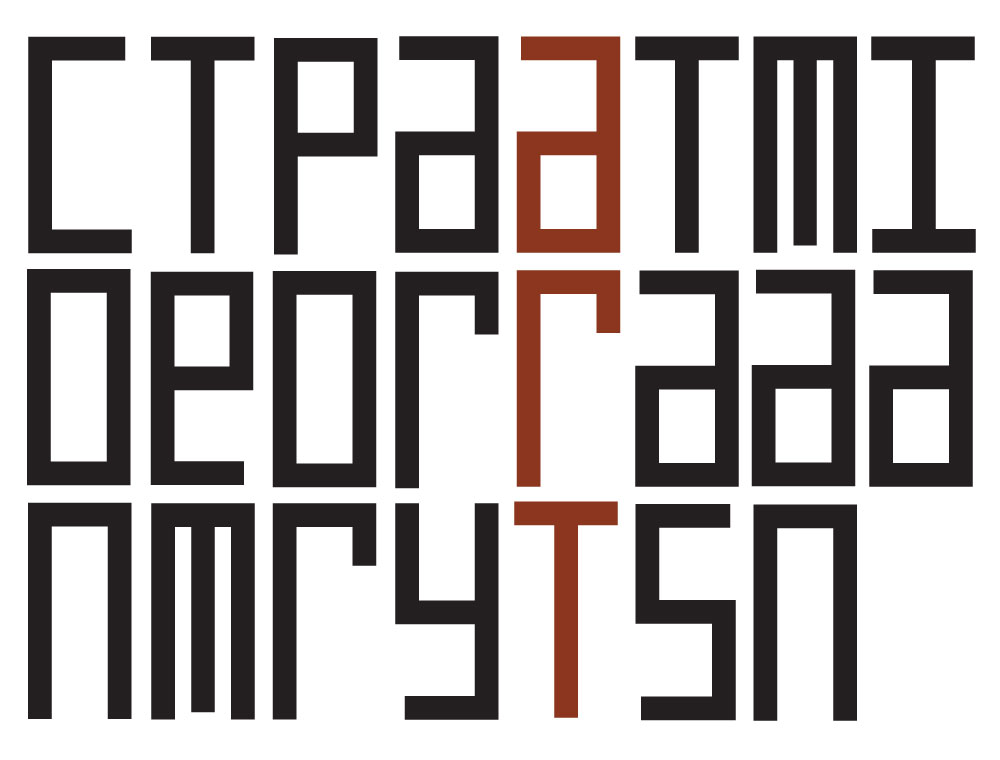#2 - Signs in Spaces
Sarah Jones on Cooking the Books, George Egerton-Warburton.
In the universe now there was no longer a container and a thing contained, but only a general thickness of signs superimposed and coagulated, occupying the whole volume of space; it was constantly being dotted, minutely, by a network of lines and scratches and reliefs and engravings; the universe was scrawled over on all sides, along all its dimensions. There was no longer any way to establish a point of reference:
As a result, exhibitions had all become institutionally corralled relational field-slash-scape-slash-assemblages (slash-DJ-slash-model-slash-actress’). Galleries were now spattered with haphazard negotiations that made them indistinguishable from any other space; supermarkets, carparks, share houses, nightclubs, dinner parties, alleyways… Collected fragmented narratives, collages and repurposed sculptures— engagement, affect and storytelling— everything had started to stink of the slops of every smart and spoiled boy’s metamodern tantrum.[i]
During those years we learned that any door can have its locks swapped so as to become another squatted barracks for further proof of an endless series of possible connections or enmeshed occurrences. We tired of dancing out our pseudo sexual romps in the false light-dark of our windowless institutions. We wearied of the repetition of our greasy anecdotes that flaccidly eroticised the tinsel of whose vernacular exactly?
We longed to return over and over to the beginning in which we had so naively conceived of the making of the sign in the first place. We desperately wanted to race back through millennia to that palpable excitement of the visionless original —conceived with a notion so momentarily perfect it precedes vision if seeing is what is required— as if born in the perfect black vacuum of the beginning of space.
But that original sign was so quickly perverted by another; its memory immediately trumped by the memory of the joy of its creation; its novelty lost in its recreation in many more than a million forms since. Long, grey shadows filled what was once the absolute darkness of the galaxy in this endless sunset of “late” capitalism. The unpredictable bass thump of liminality became the endless whining of a circular saw with nothing to sink its teeth into. And soon even memory offered little comfort as we saw that it was inevitable that these forms had shifted.
The enthusiastic fervour in which everything had become visible, knowable and markable, had accelerated into the abyss of unknowability. We were lost in a mess[ii] of our own making, our signs pointing only ever to other signs that may or may not have been real signs, original signs, or recognisable signs and yet still the idea of making signs evoked in us a fleeting joy. Romanticism’s unique tenet, its “capacity to turn its limits into the power for its own self overcoming, an overcoming which then itself posits a new limit to be overcome in its turn,”[iii] had continued to run its course in the afterglow of its recognition but felt now like a wonderful trick. The neoromanticism of the universe now was an Ouroboros of disjointed personal anecdotes, references to Wittgenstein’s theories of non-compliance in interpretation in language, Oulipean poetry, the badly inked tail of the letter R in an evening newspaper joined to a thready imperfection in the paper, one among the eight hundred thousand flakings of a tarred wall in the Melbourne docks. Now? Now, is where sentences remained unfinished, opinions unresolved and exhibitions futile. The realisation of this oscillating present, producing only miniature novelties by tiny variations like a glitchy Spirograph, has left the galaxy and its mirror image; the gallery, blushing.
Only nostalgia permitted us the delusion that there were still dark pockets of emptiness that had not been filled and arranged and classed as signs of the exhibit-able. We attempted the redress-ing of romanticism under the guise of addressing “our crisis-ridden moment.”[iv] We wanted once again to be enamoured with the possibility of making universally appealing our solitary torments. But all that we discovered was that this very irreconcilability, the irreconcilability of Romanticism, was Romanticisms’ badge of honour and nothing more.[v] To deny romanticism is to remain hopelessly romantic and to embrace it is to fall into the same.
We were regurgitated back into our current complication— a movement that “moves for the sake of moving, attempts in spite of its inevitable failure… seeks forever for a truth that it never expects to find.” This oscillation is a reappropriation —no! a re-signification[vi]— of the desire to reach for some synthetic-event-horizon in the knowledge that it cannot be grasped, aiming to infuse reality with some explosive device of the imagination.[vii] But grown so accustomed to our practices of marking, our obsession with going forth to conquer the only thing that mattered… sign and dominion and name… the device we imagined was yet another sign.
Timotheus Vermeulen and Robin van den Akker, Notes on Metamodernism, Journal of AESTHETICS & CULTURE Vol. 2, 2010. Accessed at: https://www.tandfonline.com/doi/full/10.3402/jac.v2i0.5677?scroll=top&needAccess=true on 2018-03-19
Joan Retallack “:Re:Thinking:Literary:Feminism” in The Poethical Wager, University of California Press, California, 2003. P 110-144.
Clemens, Justin, and Professor Martin Stannard. The Romanticism of Contemporary Theory : Institution, Aesthetics, Nihilism, Taylor & Francis Group, 2003. ProQuest Ebook Central, http://ebookcentral.proquest.com/lib/unsw/detail.action?docID=4817547. Created from unsw on 2018-03-19 23:58:20.
Clemens, Justin, and Professor Martin Stannard. The Romanticism of Contemporary Theory : Institution, Aesthetics, Nihilism, Taylor & Francis Group, 2003. ProQuest Ebook Central, http://ebookcentral.proquest.com/lib/unsw/detail.action?docID=4817547. Created from unsw on 2018-03-19 23:58:20.
JOURNAL is edited by CAT Engagement Co-ordinator, Lisa Campbell-Smith.
The project commissions writers to create new text-based works that engage with the CAT exhibition program. The platform provides an opportunity for writers to develop work outside the structures of critique and criticism prevalent in art writing.
